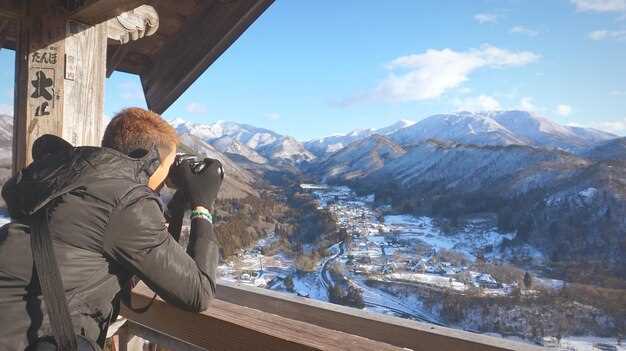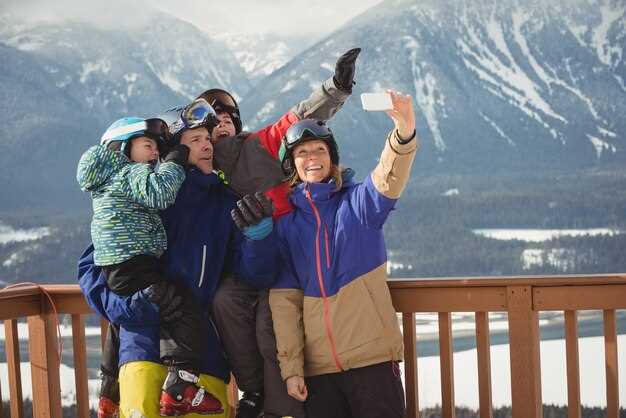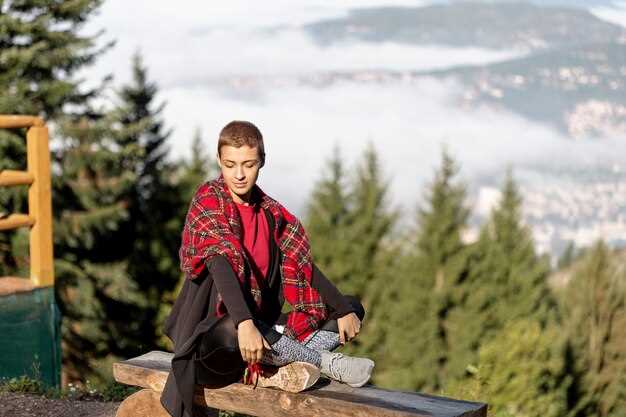
moriond sits at about 1,650 meters in the French Alps and welcomes a friendly crowd. The pistes reach roughly 2,730 meters on La Saulire, and a compact village layout keeps transfers under five minutes from lifts to your lodging. This destination gives reliable snow, high quality facilities, and a parks network that makes it easy for families and solo travelers alike to enjoy a high-quality alpine experience.
Across the european Alps, you can pick a choice of places that blends towns, resorts, and outdoor adventures. Those valleys near moriond offer varied scenery, from glacier bowls to cozy pine forests. Where altitude changes alter the light, you can see different color palettes. In those areas you can admire animal life and the plant life along the trails, and you can feel the climate shift with altitude. Each route invites you to tailor your day from gentle family walks to challenging ridge ascents.
For outdoor adventures, combine ski touring, snowshoeing, paragliding, and guided hikes. In mornings you ride to high terraces, and in the afternoon you descend to near-town trails that overlook the laiguille spire. You can admire nature, follow animal life, and learn about the plant life along every route. The climate shifts quickly, so layering matters from dawn to dusk.
To maximize your trip, host a couple of nights in a few places and keep your choice flexible. A typical loop would pair moriond with Méribel or La Tania, then push to a Swiss or Italian valley within a short drive. This destination would give you access to nearly 600 km of linked runs in the Three Valleys, with elevations from around 1,650 meters to over 2,730 meters. If you would rather focus on family-friendly routes, choose a base with easy hosting options and short, near transfers. That would be a practical plan for a balanced Alpine itinerary.
Alpine Travel Guide

Book a lakeside chalet near mont-blanc and base your stay in a village located along the lakeside trail. This location puts you minutes from trekking routes, paragliding takeoffs, and a sturdy wooden bridge crossing over rushing streams. The climate favors clear mornings and bright afternoons, making long days on the trails enjoyable, with peaceful corners away from the crowds.
Where to start: Chamonix Valley serves as a perfect hub, with easy day treks along the valleys to Lac des Chéserys and to the laiguille ridge. Ideally, choose a route that stays along the river and culminates at a panorama with Mont-Blanc looming on the horizon. The route includes short ascents, vertical sections for experienced hikers, soft meadows, and a parc with shaded picnic spots.
Tickets and transport: buy tickets for the gondola or funicular in advance online or at the station, including online options. A round-trip lift pass typically ranges from 60–85 EUR depending on season. Start your ascent early; by mid-morning you reach higher viewpoints and avoid the crowds. For river crossings, a sturdy bridge connects the main paths, and a second footbridge leads to secluded lakeside bays.
Activities to fill your days include paragliding from take-off points above the lakeside and trekking along forest trails. If you prefer a gentler pace, rent a paddleboat by the lakeside, or stroll the edge of the parc and photograph reflections on the water. For a cultural stop, visit a small fort overlooking the valley and sample local cheeses in a nearby village.
Where to stay: chalets and houses along the road offer cozy interiors and warm wood tones. In the evening, they retreat to a terrace and watch the sunset over Mont-Blanc; younger visitors enjoy climbing walls in the villages, while adults might prefer a peaceful walk along the lakeside. If weather shifts, switch to a sheltered hike through the forested parc trails or a museum visit in the valley towns.
thanks for exploring this Alpine itinerary and may your travels bring clear skies and unforgettable views.
Top French Alps Towns to Visit This Summer
Chamonix-Mont-Blanc should be your first stop this summer, reachable by train from Lyon or Geneva and offering a wide valley of trails, glaciers, and the laiguille du Midi cable car that enchants every passerby.
-
Chamonix-Mont-Blanc – Begin with a stroll along the historic streets, ride the Mont-Blanc Express by train into the surrounding valley, and take the Laiguille du Midi cable car for panoramic views. The Montenvers train to Mer de Glace reveals a biodiverse high-altitude landscape, while trails through the valley expose you to alpine lakes and varied temperatures as altitude rises.
-
Annecy – A lakeside town where waters sparkle under wide skies. Rent e-bikes for a lakeside ride, stroll the medieval streets, and savor fondue at sunset. Summer thermometers rise warm by day and slip cool by evening, ideal for long strolls beside the crystal lake and its surrounding biodiversity.
-
Megève – A refined hillside town famous for private chalets and gourmet fondue. Explore forested trails at mid altitudes and finish with a riverside stroll along the valley’s edge. The altitudes here offer comfortable temperatures, and the town’s historical centers provide charming houses and storefronts.
-
La Clusaz & Le Grand-Bornand – Pair these two adjacent villages for a wide choice of hiking routes, easy rides along forest paths, and mountain views. You’ll find open meadows rich in biodiversity, traditional houses, and lively terraces perfect for a summer break.
-
Grenoble & surrounding forts – Use Grenoble as a cultural hub and a gateway to chartreuse biodiversity. Visit the Fort de la Bastille by a short cable car ride, then wander historical streets and riverside paths that lead to quiet waters and alpine viewpoints.
-
Val d’Isère & Tignes – High-altitude towns that stay vibrant in summer with glacier-fed lakes nearby. Trails wrap around the high fields, and you’ll enjoy cooler temperatures above the tree line. The laiguille routes and panoramic overlooks make a memorable platform for hiking and photography.
-
Les Deux Alpes – A classic for summer alpine activities, with a glacier region that keeps hiking and mountain biking options wide and accessible. Expect dramatic views, rocky slopes, and waters glistening in the sun after long climbs.
-
Serre-Chevalier & Briançon – A historic valley with Forts Vauban and a strong alpine heritage. Explore old ramparts, stroll through ancient townhouses, and enjoy breezy hillside trails that reveal both nature and heritage.
-
grimentz & cross-border options – If you extend your itinerary beyond France, consider a private transfer to grimentz in Switzerland for a high-altitude ride and lakeside hikes. This cross-border add-on pairs well with a French Alps base and broadens your choice of landscapes and waters.
Theres always a choice of routes: train connections link towns efficiently, while private transfers can shorten multi-town itineraries. Plan a light, day-by-day rhythm to maximize hiking, lakes, and historical stops, then finish with a comforting fondue and a stroll through the old stone houses that define each town’s character.
Accommodation Options: Chalets, Hotels, and Family-Friendly Resorts
For the best start, book a chalet in a vauban-inspired place within 500 meters of the lift, so you skip long walks and dive into alpine experiences immediately.
Chalets offer flexible layouts for families and groups. Expect exposed timber beams, warm wood details in larch tones, and personal kitchens that turn meals into shared experiences. Most chalets sleep 6–12 and provide private hot tubs, starter pantry, and sunlit balconies to watch glaciers and valleys beyond. Choose a place with a perfect balance of privacy and social space, easy access to outdoor paths and bike or snowshoe options, so you can switch from porch to piste within minutes.
Hotels deliver reliable service and a central atmosphere. Look for properties with kid clubs, indoor pools, available babysitting, and regional cuisine, plus flexible breakfast times and early departures. In addition to standard options, a shuttle service to lifts is often available, reducing long walks after a day on the slopes. Today, sustainability and biodiversity-focused gardens add value to the stay.
Family-friendly resorts combine convenience and adventure. They present gentle slopes, magic carpets, and dedicated kids clubs, plus sledding hills and easy hiking routes in summer. The best resorts cluster accommodations around a central plaza so you can switch from an outdoor adventure to a cozy lounge within minutes. Look for a range of room types, from compact studios to larger chalets, and another option that puts your family near the nursery slopes. The atmosphere is welcoming, with hearths, soft lighting, and an inviting vibe that suits both children and adults.
Seasonal highlights and experiences. The region offers a unique blend of mountains, glaciers, green valleys, and regional biodiversity. Many villages are connected by scenic paths between lakes and forests, with bike lanes and easy routes clearly marked. A strong источник for planning is to check local tourism boards and guest reviews; these notes help tailor a plan within your pace. desère and small touches like a balcony herb garden or a guest book with local itineraries can enhance your stay. The exposure to fresh air and mountain light is incredible and easy to manage with a day plan that fits your pace.
Must-Do Outdoor Adventures: Hiking, Cycling, and Lake Activities

Hike the Eiger Trail from Grindelwald to Alpiglen for a half-day that delivers dramatic peaks, green valleys, and the scent of larch along the route; bring a picnic and find a sunny ledge by waterfalls to rest. Those alleys and wooden houses near the trailheads add character, and grindelwald serves as the gateway to this route.
Cycle days shape up nicely in méribel and the surrounding areas, with smooth routes along forested green corridors and alpine meadows. Those routes cross into the Three Valleys network, offering options for those with time to explore. Start with a gentle loop toward Les Allues, then tackle the Col de la Loze for panoramic views of the peaks and valley below. Along the way, indulge in a regional picnic at a lookout, and pause at Vauban-inspired villages to study the architecture of high-end chalets and the quiet alleys that thread through the hamlets.
Lake days set the tempo for relaxation after strenuous hikes or rides. Kayaking and other lake activities let you glide across glassy water, watch the reflections of peaks, and reset temperatures with a cooling dip. Includes guided rentals in many areas, with options for beginners and experienced paddlers. In the Alps, you’ll find plenty of places to reserve a kayak by the hour or half-day; book a session to lock in equipment, then explore the adjoining green banks, cabins, and small villages along the shore. If you’re missing morning light, target calm hours when the water mirrors the sky and the wind stays soft.
| Aktivita | Region | Season | Typical Time | Notes |
|---|---|---|---|---|
| Hiking | Grindelwald/Eiger Trail | Summer–Fall | 4–5 hours | Alpine larch, Bachalpsee detour, wildflowers; start Alpiglen |
| Cycling | Méribel & Three Valleys | Summer | 2–4 hours (out-and-back) | Green lanes, Col de la Loze views, e-bike options |
| Kayaking & Lake Activities | Alpine lakes near valleys (various) | Summer | 1–3 hours | Rentals on-site; calm mornings ideal; bring a picnic to the shore |
| Waterfalls & Scenic Walks | Grindelwald region | Spring–Fall | 2–3 hours | Cascade trails connect villages; family-friendly |
Getting Around Between Alpine Towns: Trains, Buses, and Car Routes
Start with trains for travel between alpine towns; book ahead at the station to lock in rates and a comfortable seat, especially during holidays.
Rail networks offer historical reliability and fantastic, unmissable connections that link isère towns like moriond, yvoire, and titlis gateways with minimal transfers. A single booking covers several legs, helping you focus on the next hike or trekking plan.
On the ground, regional buses fill gaps and present solid options for towns not directly served by rail. Check hours, and use a travel pass to keep costs down while you explore the local culture and events; a short stop for a park break or a quick hike makes the ride more enjoyable. For lakeside legs, a ferry with a skipper offers a fantastic, relaxing complement to land travel.
Car routes provide maximum freedom to tailor holidays. A full day can combine scenic passes around isère with stops on the way to yvoire or moriond, and even a detour toward titlis for a snowy twist. Plan refuels, parking, and tolls, and savor the sound of the mountains as you drive.
To get the most from your itinerary, mix modes: rail for longer hops, buses for mountain villages, and car routes for the final leg to a trailhead. This approach suits future adventures and holiday plans, ensuring you have access to paragliding launch sites, rugged ridge hikes, and biking routes that feel both fantastic and practical. For lake-set days, a lake crossing with a skipper can be a memorable addition, and booking ahead guarantees full flexibility in a busy Alpine season.
Safety, Weather, and Practical Planning for Alpine Summer Travel
Pack a lightweight waterproof shell, sun protection, and a hydration pack, and check the morning forecast before any hike in the Alps.
In summer, mornings in the valleys are typically pleasant, but high passes stay cool and winds can rise quickly. Storms hits between 14:00 and 17:00 on exposed ridges. Temperatures range from about 5–15°C at 2,000–3,000 m and 20–28°C in the valleys. Dress in layers, carry a windproof layer, and drink regularly. Start just after sunrise to maximize light and complete the ascent before weather turns, enjoying the color of wildflowers and plant life along the way for those spectacular views from marked trails.
Safety essentials include a detailed map or offline GPS, a charged power bank, whistle, and a compact first-aid kit. Tell someone your heading and route, and stay on marked trails. In chamonixs and haute-alpes, mobile service can vanish on higher trails, so prepare a simple contingency plan and know where to shelter if lightning or strong wind hits. If weather hits, retreat to the nearest marked shelter or park building and head back before fatigue or darkness set in.
Advance bookings matter: reserve refuges and inns in advance, especially during the peak months. For post-summertime trips, expect calmer schedules and lower rates, but also shorter opening times that may affect dining or transfer. If you choose vauban-style huts, verify check-in windows and any limits on meals; always have a final plan and a backup option if a day goes off plan.
Hikes and exploring the surroundings require smart planning. Pick routes with clear signage and marked sections; those hikes that stay within moderate elevation gains fit most travelers, while longer climbs demand acclimatization. Bring enough water and easy snacks; note the color and scent of the plant life along the way to enhance the experience. For variety, combine a high-country route with a gentle lake stroll to rest in park areas near yvoire and hautecombe.
Months and timing: July and August offer long days and reliable lift access, while late August through September brings cooler mornings and quieter trails. If you travel after post-summertime, plan to start earlier and keep a flexible plan in case of hits by storms; have alternative short routes ready. Check forecasts daily, carry spare batteries, and know whether you should switch to indoor activities if trails close.
Destinations for a balanced day include heading to chamonixs for a cable-car panorama with spectacular views, a relaxed stroll in yvoire along the lake, and a quiet pause at hautecombe park to reflect on your day. In the hautes-alpes region you can combine these places with alpine lakes, ridges, and small valleys for a complete itinerary that still leaves time for rest and photography.
